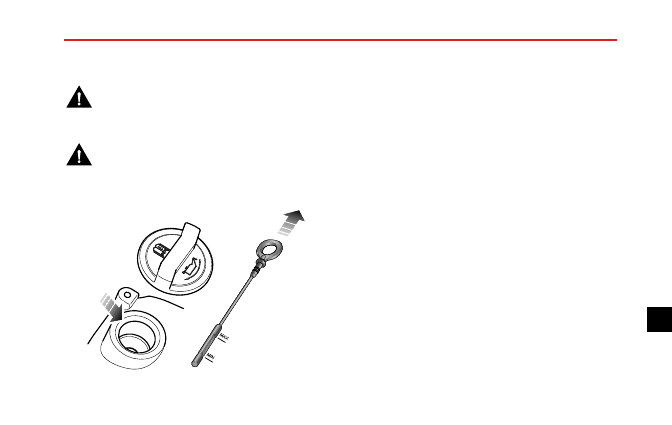MG 615. Instruction - part 13

MAINTENANCE
Diesel Engine Oil Level Check and Top Up
Driving the car with the engine oil level
ABOVE the upper mark, or BELOW the lower
mark on the dipstick, will damage the engine.
Take care to avoid spilling engine oil onto a
hot engine – a fire may result!
M
A X
M IN
Check the oil level weekly and top up with oil if necessary.
Ideally the oil level should be checked with the engine cold
and the car resting on level ground. However, if the car is
in use and the engine is already warm, wait for at least two
minutes after switching off before checking the level.
1 Withdraw the dipstick and wipe the blade clean.
2 Slowly insert the dipstick and withdraw again to check
the level, which should NEVER be allowed to fall below
the ‘MIN’ mark on the dipstick.
3 To top up, Screw off the oil filler cap and add oil to
maintain a level between the ‘MAX’ and ‘MIN’ marks
on the dipstick.
4 Wait for five minutes and then recheck the level,
adding more oil if necessary – DO NOT OVER-FILL
DIESEL ENGINES WITH LUBRICANT!
5 Finally, ensure the dipstick and filler cap are replaced.
For diesel engine oil type and capacity refer to the
‘Technical Data’ Chapter.
193
7